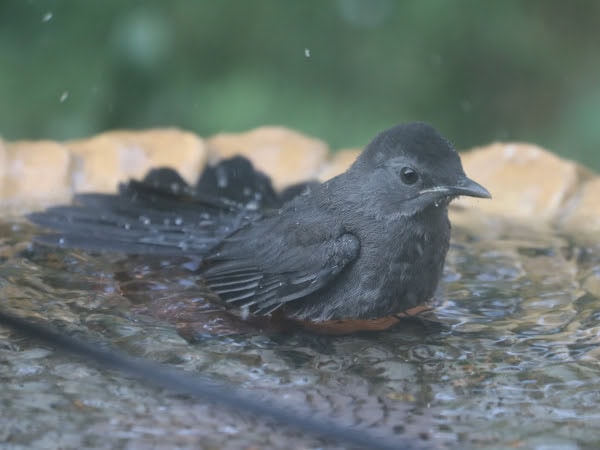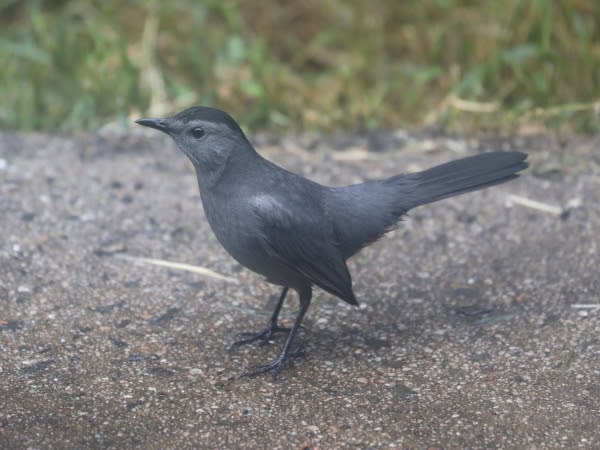Gray Catbirds
Melissa and I love watching the Gray Catbirds that visit our yard every summer. As a member of the same family as the Northern Mockingbird, catbirds have an impressive song repertoire, and they’re relatively social and intelligent. They are one of the only birds that can recognize when their nest has been parasitized by Brown-headed Cowbirds. They will usually reject a cowbird egg, pushing it out of the nest.
Gray Catbirds nest across most of the United States and southern Canada from the Atlantic Ocean to the Rocky Mountains. They’re common in the Susquehanna Valley from late April through early October. During the winter, some catbirds stay in the United States, mostly along the Gulf Coast and the Atlantic Coast, as far north as Cape Cod. They’re rare in southeastern Pennsylvania in the winter. Other catbirds fly much farther south, with some flying across the Gulf of Mexico to southern Mexico, Central America, and some islands in the Caribbean Sea.
Catbirds eat a variety of insects and spiders, as well as fruit. You can attract more catbirds to your yard by providing their favorite foods, including Bark Butter, mealworms, suet, jelly, and sunflower chips. To cater to their love of fruit, try planting native dogwoods or native viburnums like southern arrowwood. Native berries tend to have a higher fat content than the berries that grow on non-native plants. Fat is an important energy source during migration to catbirds and other migrating birds.
Gray Catbirds
Melissa and I love watching the Gray Catbirds that visit our yard every summer. As a member of the same family as the Northern Mockingbird, catbirds have an impressive song repertoire, and they’re relatively social and intelligent. They are one of the only birds that can recognize when their nest has been parasitized by Brown-headed Cowbirds. They will usually reject a cowbird egg, pushing it out of the nest.
Gray Catbirds nest across most of the United States and southern Canada from the Atlantic Ocean to the Rocky Mountains. They’re common in the Susquehanna Valley from late April through early October. During the winter, some catbirds stay in the United States, mostly along the Gulf Coast and the Atlantic Coast, as far north as Cape Cod. They’re rare in southeastern Pennsylvania in the winter. Other catbirds fly much farther south, with some flying across the Gulf of Mexico to southern Mexico, Central America, and some islands in the Caribbean Sea.
Catbirds eat a variety of insects and spiders, as well as fruit. You can attract more catbirds to your yard by providing their favorite foods, including Bark Butter, mealworms, suet, jelly, and sunflower chips. To cater to their love of fruit, try planting native dogwoods or native viburnums like southern arrowwood. Native berries tend to have a higher fat content than the berries that grow on non-native plants. Fat is an important energy source during migration to catbirds and other migrating birds.
About The Author
Dan Hinnebusch is the Ornithologist for Wild Birds Unlimited. Click to learn more.





